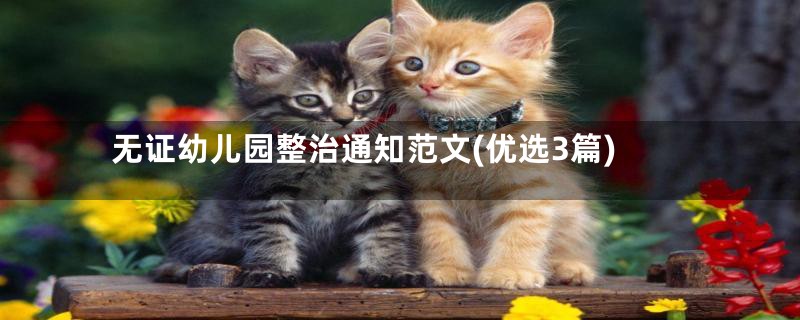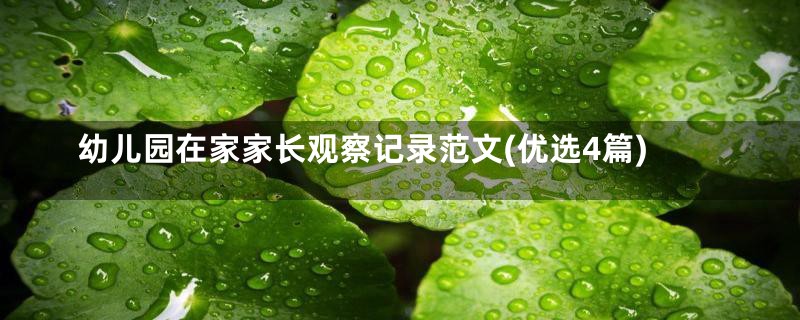幼儿园大班英语说课稿范文(优选19篇)
- 范文
- 2023-12-04 11:55:29
- 426
幼儿园大班英语说课稿范文 第1篇
教材分析:
《秋天的雨》是义务教育课程标准实验教科书语文(人教版)三年级上册的第11课,是一篇文质兼美的散文。文章名为写秋雨,实则写秋天。把秋雨作为一条线索,将秋天众多的景物巧妙地串起来,给我们带来了一个美丽、丰收、欢乐的秋天。通过本课的的学习,体会秋天的美好,感受课文的语言美,是编选这篇课文的主要意图,这也是本篇课文的教学重点。
设计理念:
从长远看,语文教育必须超越实用主义的局限,从精神的拓展,从人的发展的高度去把握,才能领会到语文所包含的丰富内涵。因此这节课我以培养学生语感,发展学生语言能力为教学重点,舍弃与此无关的教学环节,并以读来贯穿全文。使学生在读中感悟、读中体验、读中积累,读中运用。
教学目标:
1、加强预习力度,分层次检查词、句、段。
2、重点学习第二段,分层次朗读,从读顺到读出动态美到读出颜色美。
3、品味文中语言,学习语言,积累语言,内化运用语言。
教学重点:重点学习第二段,分层次朗读,从读顺到读出动态美到读出颜色美。
品味文中语言,学习语言,积累语言,内化运用语言。
教学难点:品味文中语言,学习语言,积累语言,内化运用语言。
教学过程:
一、拓展导入,加强感受
新课标指出,应拓宽语文学习和运用的领域,注重跨学科的学习和现代化科技手段的运用,使学生在不同内容和方法的相互交叉、渗透和整合中开阔视野,提高学习效率,初步获得现代社会所需要的语文实践能力。上课前,我布置学生查找有关雨的词语,从而了解相关知识,拓展学生知识面。
生反馈:倾盘大雨、绵绵细雨、雷雨、暴风雨……
生齐读课题。
二、初读课文,整体感知
语言的学习应该突出层次性,从词到句到段,层层递进,步步深入,才可以一步一个脚印扎扎实实地学透。
初读课文,整体感知后检查三组词语:
(颜色词)黄色 红色金黄色橙红色 紫红的淡黄的 雪白的
(叠词)轻轻地 香香的 甜甜的 厚厚的 油亮亮的
(动作词)扇哪扇哪 飘哇飘哇 你挤我碰争着 频频点头勾住
此环节设计一是为了扫除阅读障碍,为读通读顺做好辅垫;二是为了更好的理解课文内容,更好的感悟、运用语言。
1、检查句子
师:下面的句子更长了,但读起来也更有味道了。
幼儿园大班英语说课稿范文 第2篇
在本次活动中,各个环节采用游戏法。情境法等不同的方式方法开展教学。激发幼儿的学习兴趣,体现活动形式的丰富性。
根据本班幼儿的接受能力,确定以下活动目标:
1。听懂并能理解游戏规则。
2。学习怎样去形容水果。
3。仔细观察画面中的图画,根据画中特色去猜出谜底。
活动准备:水果图卡
为适应活动目标的需要,提高幼儿的学习兴趣,我设计了以下几个环节:
首先,教师先问问幼儿吃过哪些水果?请幼儿发表一下自己喜欢吃什么水果?以次导入主题。
然后教师和幼儿一起玩猜果谜的游戏。教师可以加一些肢体动作,适当的补充相关资料。如:弯弯曲曲的一条藤蔓,一片片绿色的叶子遮满棚架,像铃铛挂在上面,可是铃铛不响酸又甜。小朋友知道这是什么水果吗?以次加强幼儿的猜谜线索。当幼儿猜出谜底时,教师和幼儿分享谜底(葡萄。西瓜)的特征和吃起来的味道。
接下来,请幼儿一边看着书中的图画,一边以轻松的心情分享刚刚猜果谜的趣味。可以将事先准备好的各种水果图卡拿出来,和幼儿继续玩猜其他果谜的游戏。
最后,学习词语:葡萄。西瓜
教师自制词卡,引导幼儿说出葡萄和西瓜的外形特色和它们吃起来的味道。并且提问:
小朋友,请问葡萄的外形像什么呢?葡萄吃起来的味道又如何呢?
西瓜的外面是什么颜色的呢?里面又是什么颜色的呢?吃西瓜会吐什么东西呢?又是什么颜色的呢?
活动形式凸显游戏性,在本次活动中,各个环节采用游戏法。情境法等不同的方式方法开展教学。激发幼儿的学习兴趣,体现活动形式的丰富性。同时,也将为获得好的效果打下坚实的基础。
幼儿园大班英语说课稿范文 第3篇
The reporter learned from the Education Bureau of Gangwan District, Qincheng city that three staff members involved in corporal punishment of children in the security video of jin61 kindergarten have been suspended. The kindergarten has been rectified under the supervision of the education department. The parents of the children and the kindergarten have not reached an agreement, but the parents still complain to the relevant departments, demanding that the problem be solved as soon as possible.
Miss Cheng, the victim's mother, said that since the incident happened for more than a month, her child had not yet gone to kindergarten. He became more and more isolated, unwilling to say hello to others, not willing to contact other children, especially with teachers, and he was not willing to go to kindergarten. All this made parents very angry.
Staff of the harbor district Preschool Education Bureau told reporters that the District Education Bureau had already finished in October Ten days to our district's education system jin61 kindergarten issued a notice of criticism, from January to December, the staff of these departments have partited in the centralized rectification, at present, corporal punishment of children and violation of the duties of teachers, nursery staff have been ordered to suspend their duties.
中文翻译:
记者从秦城市港湾区教育局获悉,金六一幼儿园保安录像中涉及体罚儿童的3名工作人员已被停职,幼儿园一直在教育部门的监督下整改,孩子家长和幼儿园尚未达成一致但家长仍向有关部门投诉,要求尽快解决问题。受害母亲程称,事情发生一个多月以来,她的孩子还没上幼儿园,他变得越来越孤僻,不愿意和别人打招呼,不愿意和其他孩子接触,特别是和老师接触他也不愿意去幼儿园这一切让家长非常生气,港湾区学前教育局的工作人员告诉记者,区教育局已于xx月下旬对我区教育系统内的金六一幼儿园进行了通报批评从年月日至年月日,这些部门的工作人员都参加了集中整顿,目前,体罚儿童和违反教师、保育员职责的三名工作人员已被责令停职。
幼儿园大班英语说课稿范文 第4篇
First, teaching materials and design ideas
The color is very familiar to us, the color throughout every corner of the world, it can be said that we live in a world full of color, no color of all things, our life will be dim and dark color, make the world beautiful color, also beautify the hearts of children in our lives and we live in the world is not no color.
When the children playing blocks, they often put it down, whenever the building blocks of riotous with colour children ate meal nutrition in kindergarten, they will go home to mom and dad said: “the kindergarten meal really beautiful, delicious”, when the children finished a painting, they will have a special the satisfaction of their work, it is because of the color of the charm.
The “Outline” pointed out: “education activities should be suitable for children at this level, but also has some challenges; not only meet the practical needs of children, but also conducive to the long-term development of things; and both close to the lives of young children to select children's interest, but also conducive to the development of children's experience and view.” So I designed this event to “know color - red and yellow green”.
Two. Talking about the target of activity
The goal of activities is the starting point and destination of educational activities, which plays a guiding role in the activities. According to the age characteristics and actual situation of small class children, I set the activity target as the following three aspects.
1, understand the goal: recognize, distinguish red, yellow, green, in the activity to find out the corresponding color.
2, ability objective: to develop children's observation, memory and imagination.
3, emotional goal: to experience the joy of the teacher and the companion game, so as to stimulate the child's desire for knowledge.
Three. Preparation for activity preparation
For in order to complete the goal of service activities, activities and activities must be ready to adapt to the target, so I can do the material preparation: red, yellow, green box, cards, old newspapers and the layout of the environment, but also consider the children have contact with the color of life experience.
The focus of this activity is to make children know and distinguish red, yellow and green; the difficulty is to find the color that corresponds to it in the activity.
Four. Talking about the process of activity
According to the content of the teaching material and the ability of the children to accept, I divide the teaching process into three parts.
(1) understanding of color
The event began, I take “the mysterious box” to introduce the activities to attract children's attention, when the first red box show in front of children, so I can not open the form, to guide children to say: “red box red box open, use the same method to guide the children to say:” the green box green box fast open the “yellow box” yellow box open “, to strengthen children's understanding of color. When three sun babies are found in the last box, red, yellow and green, do they guide children to find the color of the body? Tell me what you've seen in this color. Here, I create a very relaxed language environment for children, so that every child wants to speak, dare to speak and organically say, in developing children's interest in color, at the same time, developing children's oral English.
(two) looking for color
In this part I designed a ”Sun baby“ of the game, I will be the sun baby anthropomorphic into a short story, inspire children to find the sun baby's interest, in order to let the children can experience the pleasure of looking for the sun baby, I arranged a big garden, let the children in this enjoyable environment to perception, to find, when children find the sun baby, to guide children to say the sun baby color, to help children of the sun baby stick in the body.
In this part, I have always been the helper and guider of children's development, and let children understand and understand the color further through finding and looking for children in games.
(three) looking for the corresponding color
This part is the difficulty of this activity, in order to break through the difficulty, I designed a ”wolf“ of the game, just for admission only two months of small children, to stop the music of the moment, and quickly find themselves, big sun baby of the same color, there is a certain degree of difficulty, therefore, I pay attention to children's individual differences. In the game I prepare for each child a piece of old newspapers, old newspapers were painted round red, yellow and green three colors, the weak ability of children, timid children, I will go to help them find problems, solve problems; the ability of the child, I encouraged him to bravely to find the great circle corresponding to their color, so that every child has the pleasure of success.
Five. Teaching method
In the course of the whole course of teaching, I used the teaching methods, such as the telling method, the game method, the enlightening association method and so on. Make the whole teaching activity combined, let the young children learn in a relaxed and happy environment, and make fun of them.
Six, learning method
In the teaching activities, I let the children know and distinguish red, yellow and green by guiding, observing, telling and playing. And try to create a relaxed atmosphere of learning to encourage young children to find out the corresponding color. Cultivate and develop children's expressiveness and discernment.
Seven. Extension activities
Let the children use the method after painting in the art area, each area to make different colors of signs; placing a variety of colors in the puzzle area items, let the children in accordance with the classification of color
幼儿园大班英语说课稿范文 第5篇
Xiangying kindergarten is a township kindergarten founded by Xiangying township. In the early stage, 80% of the children came from farmers' families. There were only 4 teachers and less than 30 children.
The facilities were simple and poor. Therefore, parents did not want to send their children there. Early life was very difficult and almost collapsed.
However, in the past few years, due to a project funded by the government, great changes have taken place, a new one In addition, a new small playground has been built. There are some amut facilities in the town, which provide many advanced equipment such as piano and TV for the kindergarten. The number of children has increased to nearly, and the number of teachers has reached so far.
Parents are willing to send their children to kindergarten.
中文翻译:
湘营幼儿园是湘影乡创办的一所乡镇幼儿园,早期80%的幼儿来自农民家庭,只有4名教师,不足30名幼儿,设施简陋,所以家长们不想把孩子送到那里去,早年生活很艰难,几乎崩溃了,但是在过去的几年里,由于资助的一个项目,发生了巨大的变化,一座新的建筑物取代了土造的房子,另外还建了一个新的小游乐场,镇上有一些游乐设施,为幼儿园提供了许多钢琴、电视机等先进设备,儿童数量已增加到近,教师人数达到目前为止,家长愿意送孩子上幼儿园。
幼儿园大班英语说课稿范文 第6篇
设计思路:
大家好,今天我说课的内容是大班的语言活动《聪明的小鸡》,大班的孩子特别喜欢一些竞技性质的游戏活动,我们班的孩子更是如此,在活动中他们经常进行各种各样的比赛,如喝水,拍球等等,但是孩子们的比赛结果往往是出乎意料之外的,所以我选择这个读本《聪明的小鸡》,通过这个读本是想让孩子们明白,用自己的缺点和别人的优点去比较,肯定是失败的,所以要用自己的聪明才智才能战胜对方。
教材分析:《聪明的小鸡》是选自大班的分享阅读的一个故事,这个读本所讲的是机灵可爱的小鸡在农场里如何智斗狂妄自大的狐狸最终成功获救的故事。
首先从故事的角色中,小鸡和狐狸都是最能引发孩子极大的兴趣的小动物,故事的读本:惊险、起伏的情节、富有推测的故事内容尤为符合大班学龄儿童的探索和乐于助人的社会的心理。《纲要》在语言领域中也曾经提出:发展幼儿语言的关键是创设一个能使他们想说,敢说,喜欢说,有机会说并能得到积极应答的环境以及鼓励幼儿大胆,清楚的表达自己的想法和感受,发展幼儿语言表达能力和思维能力。根据这一目标和要求,结合我班幼儿年龄特点和语言发展水平,制定以下目标:
认知目标:根据绘本的每一页故事内容,大胆猜测故事情节,并乐意表达自己的想法,发展口语的表达能力。
能力目标:培养幼儿积极参与阅读活动,能认真倾听,喜欢这本读本,并大胆讲述的习惯。
情感目标:培养幼儿不怕困难,敢于克服和面对困难,懂得比自己强的人,去斗智斗勇。在理解故事内容的基础上,掌握故事中的情节变化,能用较清晰的语言进行讲述。
根据目标我把活动的重点放在,积极参与阅读活动,能发现与图片相关的线索,喜欢这本读本。教学的难点,理解小鸡发起三次比赛的真正用意,感受故事中小鸡的聪明、机智和勇敢,体会故事中的幽默与乐趣。为了使幼儿在活动中得以充分的理解和表达,我做了以下活动准备:
小鸡和狐狸手偶各一个。小鸡,狐狸,农夫人物各一个。背景图一副。故事绘本。背景音乐。大小树枝各一个。
活动过程:
操作演示法:通过手偶的形象引导,会使幼儿深受喜爱,也符合幼儿的认知特点为了帮助幼儿理解。在我操作手偶时,也可以让幼儿直观的感受到小鸡与狐狸之间的差距(一个弱小,一个强大)。
观察法操作:为了让幼儿理解故事中小鸡,狐狸和农夫之间的关系,我选择了,用绘本故事书,这样使幼儿可以感受到形象,具体,有趣。
表演操作法:让幼儿与教师一起互动合作,进行情景的模仿表演,能引起幼儿的一定态度体验和感受,使幼儿能得到心理上的发展,并让幼儿观看,说说他们的感受,这样能渗透思想教育,又培养了幼儿的口语表达能力,从而突出了教学的重点难点。
分组讨论法:让幼儿通过故事情节的展开,根据不同环境下人物心里的变化进行讨论,让幼儿在平等,宽松,活泼的环境中有足够自我表现的机会,并且引导幼儿从不同的角度去思考问题,如果我们自己遇到了困难,会用怎样的方法去解决,让幼儿学会用聪明才智斗志坏人和解决困难。从而提高他们的生活能力。
延伸活动:让幼儿亲自体验遇到困难时候,会用什么办法来解决,并作以记录,将好的办法可以教于其他小朋友,以便每位小朋友有自我保护的能力。
幼儿园大班英语说课稿范文 第7篇
长城,若将其从字面上翻译成英文,应为“long wall”,但稍懂英语知识的人都知道,“长城”在英文中用法为“greatwall”——伟大的城墙。那是一种特定用法。是不可更改的。因为长城这一概念已渗入国人心中、深人世界人民的心中,那是一道伟大的城墙,它在中国,它是中国的骄傲。
中国万里长城是世界上修建时间最长,工程量最大的冷兵器战争时代的国家军事性防御工程,是中华民族的象征和骄傲。同时长城又是一座历史的丰碑,记述着各代王朝的政治、经济、军事、文化的历史,附会着雄略的将帅和聪明工匠的事迹,也凝聚着无数战士和百姓的血汗。
教材《长城》中所蕴含的教育价值
科学领域:了解长城的构造、起止地等科学知识。
社会领域:通过学习长城的悠久文化历史,激发幼儿的爱国主义情感。
艺术领域:欣赏长城的雄伟之类,开展再造想象绘画活动。
健康领域:通过长城游戏,锻炼幼儿的大肌肉,小肌肉动作。
语言领域:通过讲述,表达“我见到的长城”,发展幼儿的口语表达能力。
现今。由于“四二一”家庭结构的普及,孩子成为一家人的中心,他们游戏、玩乐,去的地方多,获取知识的媒介多,知识面也越来越广。但是,家长们对孩子的关注更多的是成长方面的,真正意义上思想方面的教育(诸如关心爱护他人、爱集体、爱祖国等)可谓是少之少。但是,我们知道.要成为一个社会人,为社会所接受的人,思想道德素质是最重要的。只有具有良好素质的人,才可以真正称得上是一个中国人。那么,万里长城这一中国瑰宝在新世纪的教育价值就显而易见了——“通过学习,激发幼儿爱祖国的美好情感”,这是出发点,也是最终的归宿。
鉴于幼儿情感发展的趋势,我把“万里长城”这一教学内容定在大班年龄段,因为此时的孩子情感脉络日益丰富起来,已经可以了解集体、国家这种宽泛的概念,所以在这一年龄段进行改教材的学习较为合适。同时.“万里长城”这一教材所蕴含的知识点丰富,并非一个活动就可以囊括其中,因此对这样的教材应有目的地开展一系列的主题活动。
说活动目标
幼儿园大班英语说课稿范文 第8篇
说活动目标:
1、通过游戏活动,引导幼儿的学习字母rst的正确读音,初步了解单词raitstartea的含义,发音基本准确.
2、鼓励幼儿大胆表演歌曲what would you like?
3、培养幼儿对英语活动的兴趣。
说活动准备:
rst字母卡,raitstartea的图片cd
说活动过程:
一、问候
t:good morning,everybody
二、新授
1、出示字母图片让幼儿猜
t:look,whatisit?guess
2、幼儿猜出或猜不出后,就完整出示卡片,并教会幼儿正确读音。
t:ok,it’sr
游戏:将字母卡rst依序贴在白板上,老师带读数次,再调换字母卡的顺序观察幼儿是否能认识正确的字母。
3、教会正确读音后可以配合动作加深幼儿记忆
ok,let’s do together
(如此类推,教授rst)
4、情景表演(老师带兔子、星星的图片出现)
t:o,whoiscoming?raitstar教会幼儿正确读音
t:o,look at冯老师,what’sinhishands? tea教会幼儿正确读音(引导小朋友做拿起杯子假装喝一口。
5、游戏i am home(听音乐随便叫某个幼儿的名字,由吴老师做暗号,听到暗号后停下来做动作rr(发音)rait)如此类推
t:ok,now let’s play together
(时间长就直接到goodbyesony)
三、复习歌曲whatwould you like?
ok,nowlisten to the radio
四、good bye sony
幼儿园大班英语说课稿范文 第9篇
【说设计意图】
活动设计采取小组合作的学习方式,使幼儿在相互合作_同学习。巧妙地贯穿幼儿熟悉的“买气球”“变色”等游戏情境,激发幼儿在游戏中主动学习的兴趣。
【说活动目标】
1.通过游戏激发幼儿学习英语的兴趣,培养其学习英语的积极态度。
2.幼儿能够灵活运用基本句型,能够较熟练地认读单词:blue,red,yellow;认读句子:What colour do you like? Do you like red? Yes,I ,I don’t.
3.培养幼儿合作学习的意识和习惯。
【说活动准备】
所需的卡片、气球、水粉颜料、矿泉水瓶、矿泉水瓶盖(盖内侧顶端涂有蓝、红、黄三
砷颜色的水粉颜料)等。
【说活动过程】
一、热身运动
1.以一首英文歌曲Good Morning引入学习氛围中。
2.师生打招呼问好并自由对话,营造英语氛围。
HOW are you? I’m you!
How old are you? I’m four years old.
What’S the weather’like today? Its a sunny day.
Do you like sunny day?Yes.
3.出示图片,复习white、black、pink、purple、green,并提问幼儿:Do you like black?
Peter:I don’t like black.
Teacher:I like purple.
二、认识颜色
1.通过卖气球的情境引出新的教学内容。
Teacher:Balloon,balloon,Who want to buy my balloon?(教师扮演一个卖气球药人,手里拿红、黄、蓝三种不同颜色的气球,一边走一边卖。)
Children:1 want to buy a balloon.
Teacher:What colour do you like?(教师以这个句式引出所要传授的新知识。
Children:blue!(请幼儿跟读,以此类推。)
2.读单词卡:blue, red、yellow,使幼儿尝试颜色与字卡的对应,并了解他们之间的密切关系。
3.通过游戏来检查幼儿对字卡的掌握。
(1)师生一起玩“变色”游戏。
Teacher:I am very thirsty.
Linda:Miss ,Water.
Teacher:Thank you.(教师准备喝水时,瓶内的水经过晃动将瓶盖内的黄色颜料溶解,变成了黄色。)
Teacher:Is it water7
Children:No,0range juice.
~Teacher:What cotour is it?。
Children:Yellow.
Teacher:Are you thirsty?
Children:Yes.
Teacher:Please,drink water.
经过晃动矿泉水瓶,瓶盖内的水粉颜料溶解于水中,使瓶中的水分别变成了红、黄、蓝三种不同的颜色。在兴趣正浓时,教师请幼儿找到相应颜色的字卡贴在矿泉水瓶上。
(2)利用气球分组的游戏来巩固新句型。
What colour do you like? I like red balloon.
【说设计评析】
此活动设计主要是以提高幼儿学习英语的兴趣为突破口,全面提升幼儿的听、读、认等语言能力。活动以游戏为主要的教学手段,促进教学活动生动地进行,使幼儿在愉悦的情境中快乐地学习英语。
幼儿园大班英语说课稿范文 第10篇
一、说教材
《认识时钟》是幼儿园小班数学课程。
幼儿园数学是一门系统性、逻辑性很强的学科,它有着自身的特点和规律,因此必须密切联系幼儿的生活,结合幼儿生活实际和知识经验来设计数学活动。时间是无直观形象较为抽象的概念,因此,我运用了幼儿较熟悉的一日活动的作息时间,引导幼儿认识整点、半点,如:8:00入园,4:30离园……这样易引起幼儿的情绪体验,使其容易理解和接受。根据教材内容和幼儿的实际情况,制订出本次活动的教学目标为:
1.知识目标:认识时钟,基本掌握钟面的主要结构,能叫出名称。知道时针、分针、以及它们之间的运转关系,能正确辨认整点、半点。
2.能力目标:培养观察力和操作能力,并建立初步的时间概念。
3.情感目标:通过活动,使幼儿养成良好的作息习惯。
二.说教学重点和难点
本次教学活动的目标主要是帮助幼儿认识整点、半点和时针与分针之间的运转关系,使幼儿建立初步的时间概念。为此,我提供了幼儿人手一只钟,让幼儿在拨一拨,看一看的过程中掌握整点、半点,知道时针、分针、以及它们之间的运转关系。
三.说教法与学法
为了帮助幼儿掌握教学重点,突破教学难点,在活动中始终以幼儿为主体。根据幼儿认识过程的直观形象性,遵循直观性原则,主要采取视、听、讲结合法来引导幼儿充分观察钟面的结构,时针和分针之间的运转关系;在活动中遵循活性原则,综合运用发现法、游戏法,让幼儿通过操作活动、言语活动,促进幼儿主动学习;遵循积极性原则,教师借助环境条件(实物投影仪)集图象、色彩一体,激发幼儿学习的兴趣;遵循个别性原则,对能力差的幼儿在看图拨指针时,教师注意加强辅导,如:7:00时,提醒幼儿分针在12上,时针在7上。
四.说教学准备
小兔木偶,动物钟若干只(小老鼠、小猪、小猴、小牛、小狗等),图片若干张,红、黄、绿钟各两只,幼儿人手一只钟,实物中一只。
五.说教学过程
(一)开始部分
活动一开始我出示了一只木偶小兔,以小兔离开家的时间点引出活动内容,然后出示实物钟,请幼儿说说钟的用途,总结出钟能告诉我们时间,人们的学习、生活、工作都离不开它。
(二)基本部分
在活动中我避免了“一言谈”和“自问自答”的形式,注重幼儿主动的观察,鼓励幼儿发现问题,主动求知。
1.让幼儿观察钟面,指导幼儿仔细观察。
教师提问“小朋友,看,钟面上有什么呀?”“这钟面上都有那些数字?”“这些数字都是怎么排列的?”“这两根针一样长吗?”等等,来引导幼儿初步的认识时钟。
2.认识整点、半点,了解时针和分针之间的运转关系
在本环节中,我先出示了红、黄、绿三只钟,提出了一个开放性的问题,“小朋友们,谁能看出这三只小时钟上面有什么一样的地方?”让幼儿观察,比较,最后得出分针指向12,从而总结出分针指向12,时针指向几就是几点。紧接着又出示了几只动物钟,让幼儿说说几点钟,使幼儿所学知识能马上得以巩固,而且通过实物投影放动物钟,激发了幼儿的学习兴趣。接着通过教师的操作演示,幼儿的细心主动观察,了解分针与时针的运转关系。由于这是本次活动的难点,所以我在最后不进行操作演示,让幼儿想一想,2点到3点分针时针是怎么变化的,得出分针走一圈,时针走一格。接着我又以相同的方式认识了半点及半点时分针时针之间的运转关系。
3.看图拨时间
请幼儿看几张图片,并以小兔的口吻提出:“小兔子要来考考小朋友,看谁把刚才的知识学会了。”一下子把幼儿的注意力吸引住了,然后运用图片上幼儿较熟悉的一日活动的作息时间,使幼儿对学习活动较感兴趣及易于理解,并通过操作活动,使幼儿对所学知识有了进一步的巩固,最后请幼儿讲讲自己是几点睡觉的,让活动渗入到常规习惯的培养,使幼儿养成早睡早起的好习惯。
(三)结束部分:
此次活动是以游戏:“小羊,小羊几点钟?”结尾的。幼儿可以通过这个游戏来加深对时钟的认识。游戏规则是由老师扮演老狼,小朋友扮演小羊,老师摆出时间问小朋友:“小羊小羊几点钟?”小朋友要马上回答出来,当老师问到6点钟的时候,小羊得马上跑回家,否则将被老狼吃掉。
本次活动就在这样轻松愉快的氛围中结束了。
六.活动延伸
1.教师或家长可向幼儿介绍多种钟、表及国内外有关钟表趣闻,丰富幼儿的知识。
2.在日常生活或游戏中,教师有意识的引导幼儿运用表达时间的词汇:如游戏时间,5点钟到了……
3.教室内可设置时钟,以及请家长配合提醒幼儿按作息时间活动,如:7:00起床、7:30进餐等,帮助幼儿建立初步的时间概念。
幼儿园大班英语说课稿范文 第11篇
Leaders, teachers: today, I'm talking about the theme of large class activities, _I grew up_, this is the two level theme _people are changing_ in an activity.
First, teaching materials
1, material source: in a normal height and weight measured after I put the previous test results and the test results also show that the children of their growing concern, eager to know their child's story. Therefore, I designed the theme of a series of activities, on the one hand to meet the psychological needs of children, promote the development of self consciousness; on the other hand, let the children know their elders for their care, improve their children will enjoy the elders of their love, but do not know how will be reported to state of mind. Outline requirements: should guide children to the common things and phenomena around the characteristics, changes in the law of interest and desire to explore. _I think the choice of this material stage and necessity, it conforms to the_ Outline _of the spirit:_ practical needs of education activities suitable for children, but also conducive to the long-term development; both are close to the lives of children, but also helps to develop children's experience and vision...... _
2, target location: according to the children's age characteristics and the actual situation, _Bruner's taxonomy of educational objectives_ as the basis, establish the cognition, ability, emotion and so on, integration of the integration of language, science, society, art. The goal is: (1) through various methods to guide children to find their own growth and change. (2) stimulate children to appreciate their own growth, display their ability, and establish self-confidence. (3) willing to communicate with peers and share the joy of growing up. (4) let children try to make personal growth book, develop children's fine movements. (5) let the children experience their parents' hard work, care, and enhance the feelings of parents and children.
According to the goal, I focus on the activity: _I grew up_, mainly to find their own growth and change. By observing and comparing pictures and supplies, playing videos, exchanging, sharing and showing yourself at a young age, activities are deepened. The difficulty is: sorting, making copies of personal growth according to the growth process, mainly through the cultivation of independent operation, hand muscle flexibility in the hands in the process and improve the sorting ability, looking forward to your growth. In the goal orientation, we set up the target integration view, the scientific view, the system view, each domain content organic link, the interpenetration, pays attention to the synthesis, the interest, the activity, integrates the education in the life, in the game. Therefore, I have made the following activities: (1) space preparation: pictures, clothes and articles for children are arranged on the wall, and the desks and chairs are of the same type, which is easy to evaluate and concentrate. (2) the material preparation: _growing up_ people's pictures, card paper, pencils, paper, scissors, glue and other art materials and some tools, has produced ability of the trunk of the tree, when the video (or a small shift in the garden video), the growth of the fetus and newborn parenting video. (3) knowledge preparation: children know the stories of their parents and their childhood interesting to their parents, observe the photos of their own growth at different stages, familiar with the main characteristics of the characters.
Two, say teaching method:
_Outline_ points out: _teachers should become the supporters, collaborators and guides of children's learning._. _Therefore, this activity adopts the appropriate method to organize the teaching, mainly has:
1, situational teaching method: this activity through the environment of stimulation, let children find, identify companions when children photos, triggered the children's curiosity, attract children to participate in activities.
2, demonstration method: through audio-visual means, multimedia animation _when the video (or small shift in the garden video), the growth of the fetus and newborn rearing video, let the children have a new understanding of their own growth, in this process, the use of auxiliary means of modern teaching play the function of the traditional means can not be replaced, so understanding and more thorough understanding.
3, operation method: this event with the two operating activities, the first time for children to see, try, compare, compare (childhood and present) won the most direct experience, and enhance the understanding of themselves and others in the process of communication operations in second groups; the operation of their experience once again deepen, through making, imagination painting, form their own sort of growth of understanding and expectation, experience the joy of growth.
Third, learning method:
With children as the main body, creating conditions for children to participate in inquiry activities, not only improve, exercise ability, but also sublimation of emotion. This activity adopts the method of learning to have:
1, multi-channel participation Law: the outline of the scientific field objectives clearly pointed out: _can use a variety of senses hands-on thinking, explore the problem; in a proper way to express, exchange, explore the process and results. In the activity, I guide the children to see, try, compare, say, say, and so on, participate in many senses, unconsciously develop their own interest.
2, discussion method: when the children have some feelings about their growth, allowing them to exchange their views, to tell their stories about their growth, not only let the children happy to share, to students, but also can improve children's language ability.
3, display method: let children display their ability, play the main role of children, each child has the opportunity to express themselves, and to their growth is full of expectations.
4, Tao Xingzhi said: _the trial teaching in middle school, to do, to make progress. Do in the activities of children making, sorting, arrangement of_ skill tree _, children's thinking is more flexible, a variety of exercise capacity, expand the scope of knowledge.
At the same time, I also through the complementary learning between children, teachers and children cooperative long method, express their rich and diverse understanding, embodies the _child development oriented_ concept.
Four. Talking about teaching procedure:
I used to organize this event chain program, activity process:
Stimulate interest -- free exploration -- accumulate experience -- exchange experience -- show yourself -- operation performance -- share happiness
1, stimulate interest: _interest is the best teacher_. Activities began, with the change of the activity room environment caused children's interest in children's supplies.
2, free exploration (enjoy photos and supplies in childhood): according to the characteristics of curiosity and hyperactivity of children, let the children guess the photos _who is the person on the photo?_ Why can't you guess when you talk about it? So we can find the change of children. Look, try, compare, truly feel oneself grow up. In this process, the experience of children is simple, I focus on the way to let children talk about each other: now and when compared to childhood, what changes have their own? Guide children from more aspects to compare a target reflected. 3, watch video, accumulate experience: young children to where they are from, how to grow up, full of curiosity. By watching videos, the children were brought to the mysterious time of life origin. They deeply felt the hardships of mother's pregnancy, the hardships of their parents' upbringing, and the feelings of their parents, and the target five was embodied.
4, exchange experience (memories of childhood fun): let children tell their childhood anecdotes, encourage children to participate actively, communicate with peers, share their happiness, the target three is reflected.
5, to show their children free packet exchange and display their skills, but also let the children have to learn from each other and feel the opportunities and strengths of others, please show in front of the collective individual children at the appropriate time to build up confidence and target two has also been reflected.
6, operation performance: in order to let the children feel their own growth, further understanding of the process of growing up, I let the children make a grouping operation, group _growth change map_ -- my childhood is like this: I now look like this: I will become like this - please draw a portrait of yourself in the future. A group of pictures in order: growth process please give people the sort, show people how to change? A group of children painting a would do yourself in every leaf, and then paste in the tree. Let the children choose, there are areas of integration, target four reflected.
7, share happiness: This is the extension of activities, _Outline_ pointed out _for children to display their works conditions, guide children to communicate with each other, appreciate each other, improve together._. _Children in this link to introduce their works to the companion, happy emotions have been greatly satisfied, a sense of achievement.
各位领导、各位老师:今天我说课的题目是大班主题活动《我长大了》,这是二级主题《人在变》中的一个活动。
一、 说教材
幼儿园大班英语说课稿范文 第12篇
In the past, the teacher's Appreciation Banquet was held in kindergartens, whose fault was not to hold a banquet, but simply to entertain the teacher with sincere gratitude without any comparison and show off. This is a natural performance ·········································································································, A resident with a six-year-old child said that his child was about to graduate from kindergarten. Some residents made a lot of noise and held a teacher's thank-you banquet.
Each household paid US dollars and took the children to the restaurant for dinner. When the children left, they toasted the teacher with drinks. They sent gifts to the teachers, and the kindergarten held a teacher's thank-you banquet This is not only an individual phenomenon of the class, but also a phenomenon of the school.
Some restaurant owners are used to the fact that the younger the child, the more willing parents are to spend money. At the graduation ceremony of primary school, parents only serve teachers in high-class restaurants, while cheaper restaurants still cost us dollars. The lowest price of high-end restaurants is more than US dollars, and even higher per table.
Some restaurants that list the best recipes do not have the highest price limit, such as the delicious kindergarten of sea ear in the menu.
中文翻译:
过去在幼儿园举办教师答谢宴,谁的错不是设宴,只是简单地用真诚的感恩之情款待老师吃饭,而没有任何的攀比和炫耀,这是一种自然的表现·················,赏师宴成了一种流行的做法,高中、大学、小学,甚至幼儿园的毕业生们都举行了一场宴会,一位住户带着一个xx岁的孩子说,他的孩子将要从幼儿园毕业了,一些住户闹得沸沸扬扬地举行了一个教师答谢宴会,每个住户付了美元,吃饭时带着孩子一起去餐馆吃饭,孩子们离开时拿着饮料向老师敬酒,他们送礼物给老师们,幼儿园举办了一个教师答谢宴会,这不仅是班级的个别现象,也是学校的现象,而且一些餐馆老板习惯了孩子越小,家长们就越愿意花钱,在小学毕业典礼上,家长只在高级餐厅招待老师,而较便宜的餐厅仍需花费美元。高级餐厅的最低价格超过美元,甚至每桌的价格甚至更高,一些列出最高级食谱的餐馆不设最高价格限制,如菜单中的seaear这种美味佳肴幼儿园。
幼儿园大班英语说课稿范文 第13篇
一、说课本
1、课本泉源:此运动选材泉源于生存。我们都知道,蔬菜是幼儿比力熟习的。在秋日这个丰产的季候,蔬菜在生存中到处可见,且取材便利。它的品种异常富厚,但在一样平常生存中常常发明个体幼儿不爱吃蔬菜的征象。再连系主题运动《我们爱秋日》,是以,有须要使幼儿形成对蔬菜准确的熟悉,加深对蔬菜特性的明白,引发幼儿爱蔬菜的情绪。我们以为,选择此课本有肯定的季候性、须要性,就如《纲领》中所说,“既切合幼儿的实际须要,又有利于其久远生长;既切近幼儿的生存,选择感爱好的事物或题目,又有助于拓展幼儿的履历和视野”。是以,此运动泉源于生存,又能办事于幼儿的生存。
2、目的定位:运动的目的是教诲运动的出发点和归宿,对运动起着导向感化。凭据中班幼儿年事特色及现实环境以及布卢姆的《教诲目的分类学》为根据,建立了认知、本领、情绪方面的目的,此中既有自力表达的成份,又有互相融会的一壁,目的为:
(1)造就幼儿喜好蔬菜的情绪,并在运动中乐于表示本身。
(2)经由过程什物、图片及对话辨认所学单词。
(3)能在所学单词前加上恰当色彩。
凭据目的,我们把运动重点定位于:经由过程什物、图片及对话辨认所学单词。经由过程多媒体课件、歌曲引路、游戏体验及品尝蔬菜,使运动获得深化。运动的难点是:能在所学单词前加上恰当色彩。经由过程西席树模和景象演出办理。
总之,我们建立了目的的整合不雅、科学不雅、体系不雅,力图形成有序的目的运作程式。使运动出现意见意义性、幼儿园教案综合性、运动性,寓教诲于生存情境、游戏之中。为此,我们作了如下运动预备:
1、空间预备:把幼儿围成半圆形,操纵台放于侧面。
2、物资预备:小熊毛绒玩具、创编歌曲、多媒体课件、种种蔬菜(如西红柿tomato、萝卜carrot、黄瓜cucumber、韭菜leek等 )。
3、履历预备:幼儿已经熟悉多种色彩,并对蔬菜有肯定的履历(吃过或看过)。
二、说教法
新《纲领》指出:“西席应成为进修运动的支撑者、互助者、引诱者。”运动中应力图“形成互助探讨式”的师幼互动。是以,本次运动西席除了以可爱的形象、丰满的情感影响孩子,以本身的形态熏染幼儿外,还要接纳了相宜的要领构造讲授,接纳的教法有:
1、操纵法:它是幼儿建构运动的根基要领。所谓操纵法是指幼儿着手操纵,在与质料的互相感化历程中举行摸索进修。本次操纵主如果摸索种种蔬菜的意见意义性,让幼儿在看一看、摸一摸中得到感知。
2、演示法:是指西席经由过程解说发言,把什物或教具展现给孩子看,资助他们得到肯定的明白。本次运动中的演示法是经由过程制造多媒体动画“小熊的农场”,让幼儿对蔬菜有全新的熟悉,在这一历程中,当代讲授帮助本领的应用施展了传统教诲本领弗成替换的功效,使幼儿更有爱好进修。
3、情境讲授法:在讲授历程中西席有目标地引入或创设具有肯定情感颜色的形象,为主体的活泼运动供给详细的场景,以引起孩子肯定的立场体验,使孩子生理性能获得生长的要领。本次运动的全历程,我就引入了幼儿喜好的小熊形象,连系秋收,幼儿园教育随笔激发幼儿融入到看蔬菜、买蔬菜、品尝蔬菜的情境中,使幼儿自动探讨,努力头脑,到达科学本质的进步与本性生长的.同一。
4、游戏法:游戏是幼儿的根基运动,它具有教诲性、娱乐性、缔造性。幼儿又有好动的特色,以是在讲授历程中穿插恰当的游戏,使幼儿能在快活的游戏中轻松进修。
三、说学法
以幼儿为主体,缔造前提让幼儿加入探讨运动,不但进步了熟悉,熬炼了本领,更升华了情绪,本次运动幼儿接纳的学法有:
1、多通道到场法:新《纲领》科学范畴中的目的明白指出,(幼儿)“能用多种感官着手动脑,探讨题目;用恰当的方法表达,交换摸索的历程和效果”。是以,运动中我们引诱幼儿看一看、摸一摸、学一学、说一说、尝一尝等多种感官的到场,不知不觉就对蔬菜产生了爱好。
2、体验法:生理学指出,“通常人们努力加入体验过的运动,人的影象结果就会显着进步”。为了让幼儿对种种蔬菜有更深的印象,我们就接纳了游戏体验法,在唱唱演演中引诱幼儿熟悉、喜好蔬菜。
与此同时,我们还经由过程幼儿间的互补进修,师幼互助共长的要领,表达着各自的富厚、多样性的熟悉,表现着“以幼儿生长为本”理念。
四、说讲授法式
我接纳环环相扣构造此运动法式,运动流程为:
引发爱好――提问解说――自由摸索――景象演出――品尝延长
(一)引发爱好
“爱好是最好的西席”。幼儿手工制作运动一开端西席就操纵幼儿熟习的小熊形象,为幼儿创设了“小熊的蔬菜丰产了”多媒体展现,激发幼儿不雅察蔬菜的爱好。在以下的环节中,我都因此小熊作为情节生长主线,从情势上,内容本质上深深吸引孩子。
(二)提问解说
在此环节中,西席会把故事变节再梳理一遍,接纳边提问边解说的方法,进修四种色彩各别的蔬菜(西红柿tomato、萝卜carrot、黄瓜cucumber、韭菜leek),经由过程出示什物及其图片资助幼儿影象单词。
(三)自由摸索
西席摆设恰当的游戏,来资助幼儿牢固所学单词。再与曩昔所学色彩接洽起来,以旧引新,温故而知新;新旧连系,缔造出新的语境。先生要先作树模,如:a red tomato。幼儿再凭据先生的树模,本身实验着给每种蔬菜加上色彩,如orange carrot;green cucumber;green leek。
(四)景象演出
凭据幼儿喜好模拟、饰演小动物的特色,先生让幼儿饰演成小动物去小熊的农场买菜,喜好吃哪种蔬菜就买哪种,但要用英语表达。Eg。I like orange carrot。
(五)品尝延长
幼儿从“农场”买回蔬菜后,“抵家”洗一洗品尝一下蔬菜差别的味道,并把本身品尝的效果讲给同伴听一听,进一步让幼儿相识种种蔬菜的特性,从而造就幼儿喜好蔬菜的情绪。
幼儿园大班英语说课稿范文 第14篇
说设计意图:
认识水果apple、pear、orange、banana。由于该内容是幼儿日常生活中比较熟悉的,而且是最常接触的。因此,学习的难度不是很大。在这个活动之前,教师可先复习 “eyes ears mouth and nose”这首歌,边唱边做动作,从而让幼儿对五官有进一步的认识和巩固。然后通过教师的引导,认识这些水果的英文名称,并且初步理解Yes/No/I like …的含义,学会用Yes/No/I like …的句式表达。以发展幼儿英语语言为主线,其中穿插摘果及品尝水果的游戏活动,让幼儿在快乐愉悦的氛围中学习。
说活动目标:
1、培养幼儿对于英语的兴趣,让幼儿乐意参与英语活动。
2、在教师的带领下,让幼儿了解几种水果的英文名称。
3、鼓励幼儿能模仿教师说英语。
说活动内容:
说活动准备:
盒子和不透明小袋子一个,苹果、梨、橘子、香蕉的实物及图片各若干,一幅画有一棵大树的画,刀、碟子、餐纸,多媒体课件。
说活动过程:
1、热身运动。
First let us review the song 《eyes ears mouth and nose》
Eyes ears mouth and nose,
Mouth and nose, mouth and nose,
Eyes ears mouth and nose,
It’s my body.
教师与幼儿边唱边做动作,以达到课前的热身准备。
2、学习水果单词。
(1)、apple。
教师把已装有苹果的.盒子神秘的拿到幼儿面前,激发幼儿探索的欲望.
T: Look! What’s this?
C:盒子
T: Yes. A box
T: What’s in the box? Do you know?
T: Ok, do you want to know? (引导幼儿说出Yes或No)
Ding ding dong (敲盒子)
T: Who want to try?(作举手状,并引导幼儿说出Let me try)
当幼儿拿出苹果之后,教师:Oh(惊喜的),What’s this?
C:苹果
T: Yes, apple!(教师要抑扬顿挫的反复读).read after me, apple. (幼儿跟读)
(2)、pear
教师用已切好的雪梨给幼儿尝,并让他们猜出是什么东西。
教师:Hum!(作吃的动作)It’s wonderful!
然后分给幼儿吃:Eat it!
接着问幼儿:What’s this?(梨)
教师:Yes,pear ! read after me, pear. (幼儿跟读)
(3)、orange
教师用餐巾纸把橘子包起来,然后示范闻一闻,再拿到幼儿面前给他们也闻一闻,并让他们猜猜是什么东西。
T: Hmm!(作闻的动作)The smell is good.
然后拿到幼儿面前:Smell it!
接着问幼儿:What’s this?
C:橘子
T: Yes. Orange(教师也要用抑扬顿挫的声调反复读,让幼儿跟读)。
(3)banana
教师把香蕉装在一个不透明口袋里,然后示范摸一摸,再请一名幼儿上来摸一摸,并请他猜猜是什么东西。
T: What’s in it? Do you know?
C: 香蕉。
T: Really?
请幼儿拿出水果。
T:(惊喜)Yes, banana. (教师也要用抑扬顿挫的声调反复读,让幼儿跟读)
3、复习巩固
(电脑出示一个会变魔术的小丑)今天我们这里来了一位客人,大家看是谁呀?
瞧他的手里有一根会变出东西的魔术棒,这根魔术棒可厉害啦,今天它要用这根魔术棒变出许多好吃的东西,现在请小朋友跟魔术师一起来变。一起喊one, two, three变变变。
(1) 变出苹果并提问:
T: What’s this ?
S:It’s an apple 。
T;Very good!apple, apple. It’s an apple 。
(小朋友可真棒,现在魔术师就把这个苹果送给你们)
(2) 变出橘子并提出问题。
T:Wha’s this ?
S:It’s an orange。
T:Read after me ,orange, orange。
(3) 现在请小朋友再看看魔术师还能变出什么?(梨子)
T:What’s this?
S:It’s a pear。
T:pear,pear,pear。
(4) 变出香蕉并提问。
T:What’s this ?
S:It’s a banana
T:banana,banana
4、 摘果游戏。
第一步:先把水果图片贴到大树上,让幼儿去摘自己想要的水果(可先请配班老师做示范。教师说I like orange, 配班教师摘橘子;教师说I like apple,配班教师摘苹果,然后请个别幼儿上来摘,摘到的就送给他作为奖励。并说:Oh, yes, this is an apple/ orange. Very good, thank you !
第二步:教师再贴一些图片,让全体幼儿参与活动去摘水果,然后坐到位子上。接着教师引导幼儿辨认。
T: Apple, stand up. Jump! (拿apple 的小朋友站起来跳一下)
Pear, stand up! Jump! (拿 pear的小朋友站起来跳一下)
Orange, stand up! Jump! (拿 orange的小朋友站起来跳一下)
Banana, stand up! Jump! (拿 banana的小朋友站起来跳一下)
5、品尝水果:
魔术师今天真开心和这么多的小朋友一起玩了这么多的游戏,现在请小朋友和它一起品尝水果。
教师可先做示范:拿一片橘子放入口中:Hmm!Sweet!
T: Do you want to eat?(继续引导二说出 Yes)
C: Yes.
T: OK, follow me! I like apples/pears/oranges/bananas.
接着教师发水果让幼儿品尝。 (拿到幼儿面前时一定要鼓励幼儿大声说出“I like apples/pears/oranges/bananas”,方可给他。人数太多可请配班老师帮忙。)
6、 结束。
T: OK! We are so tired. Let’s have a rest.
Let’s say goodbye to the apple.
C: Bye-bye, apple!
T: Say goodbye to the pear.
C: Bye-bye, pear.
T: Say goodbye to the orange.
C: Bye-bye, orange.
T: Say goodbye to the banana.
C: Bye-bye, banana.
多媒体课件播放歌曲《goodbye to you》,幼儿边表演边唱。结束活动。
活动反思:
(1)由于大部分幼儿在小班时没有英语基础,所以进入中班后在英语活动中,实行全英文教育有一定的难度,在某种程度上还需中英相结合。
(2)在教学活动中,教师的表情、动作一定要夸张,语音语调要抑扬顿挫,从而才能吸引幼儿。
(3)在活动中,千万不要忽略胆怯、内向的幼儿,多给他们一点关爱和鼓励。
幼儿园大班英语说课稿范文 第15篇
一、说教材
2、目标定位:活动的目标是教育活动的起点和归宿,对活动起着导向作用。根据中班幼儿年龄特点及实际情况以及布卢姆的《教育目标分类学》为依据,确立了认知、能力、情感方面的目标,其中既有独立表达的成份,又有相互融合的一面,目标为:
(1)培养幼儿喜欢水果的情感,并在活动中乐于表现自己。
(2)通过实物、图片及对话识别所学单词。
(3)能在所学单词前加上适当颜色。
根据目标,我们把活动重点定位于:通过实物、图片及对话识别所学单词。通过多媒体课件、歌曲引路、游戏体验及品尝水果,使活
动得到深化。活动的难点是:能在所学单词前加上适当颜色。通过教师示范和情景表演解决。
总之,我们树立了目标的整合观、科学观、系统观,力求形成有序的目标运作程式。使活动呈现趣味性、综合性、活动性,寓教育于生活情境、游戏之中。为此,我们作了如下活动准备:
1、空间准备:把幼儿围成半圆形,操作台放于前面。
2、物质准备:小兔子毛绒玩具、创编歌曲、多媒体课件、各种水果(如桃子peach、梨pear、柿子persimmon、橘子orange等 )。
3、经验准备:幼儿已经认识多种颜色,并对水果有一定的经验(吃过或看过)。
二、说教法
幼儿园大班英语说课稿范文 第16篇
【活动意图】
随着小班幼儿对环境的熟悉,我们对孩子早晨的入园和放学后的离园提出了新的要求:和家长手拉手自己走。这样既锻炼身体,又可以培养孩子的独立能力,同时也很安全。但在利用晨间谈话、平时的个别教育、以及语言故事、儿歌的多种教育形式后,效果仍然不是很明显。早晨依旧看到年老精瘦的奶奶背着白白胖胖的孙子从门口摇摇晃晃地往教室门口走;放学后,背上趴着,肩膀上扛着,手上抱着,姿态各异。更有一些孩子撒腿在前面跑,奶奶在人群中边喊边追;有时还会出现孩子走散,家长到处找的局面。
看到以上这些发人深省的场面,我们找到了灵感:何不利用我园的现代多媒体手段,把这些具体的,来自孩子身边的场景拍下来,让他们自己来分析,评价呢?使他们真正地从知识、情感上意识到自己为什么要这样做,这样做的好处呢? 于是,我们就设计了情感活动《我会自己走》。
【活动目标】
1.知道放学回家时应小手拉着大手,跟着家人有序地走出园门,培养初步的安全意识。
2.掌握自己与家人走散后的最基本的解决方法。
3.知道自己长大了,要自己走;激发自己走的荣誉感。
【活动准备】
1.知识准备:幼儿已学过儿歌《我要自己走》
2.物质准备:录像镜头
A.家长蜂拥着从园门口走来。
B.幼儿离园时要家人抱着、扛着、背着走。
C.幼儿跟着家人手拉手,一起走,随着人群有序地走出园门。
D.放学时幼儿离开家人,跑得远远,家人追也追不上。
E.在幼儿园走散了,回教室找老师帮忙。
3.动画课件: 儿歌《回家啦》
【教学过程】
1.看录像导入,激发交流的兴趣。
(放录像片段A.家长蜂拥着从园门口走来)
提问:小朋友看到这是什么地方,有谁?他们是来干什么的吗?(幼儿园放学的时候爸爸、妈妈、爷爷、奶奶来接小朋友的)。放学后,家长们来接我们小朋友了,离开教室后,你是怎样到幼儿园门口的?
2.看录像分析讨论,与同伴互相学习。
导语:老师把平时小朋友和家人一起到幼儿园门口的镜头拍了下来,我们来看看这些小朋友是怎样做的。
(1)幼儿看制成ppt课件的录像片段:(录像片段B)幼儿离园时要家人抱着、扛着、背着走。(录像片段C)幼儿跟着家人手拉手,一起走,随着人群有序地走出园门。最后定格在场景总图上。
提问:
你认为他们中谁做的最棒?
我们一起为她鼓鼓掌。
为什么你觉的他做得不太好呢?你想对他说些什么?我们一起对他说一说。
小结:我们小朋友已经长大,变重了,家长抱不动我们了,同时我们已经上幼儿园了,变得能干啦,要自己走。
(2)播放儿歌,幼儿跟着一起朗诵复习儿歌《我要自己走》。
导语:你们看,不但我们小朋友很能干,连小鸟、小兔,小动物们也很能干,它们也不要爸爸、妈妈抱呢。
播放儿歌:妈妈、妈妈,你快撒手,我要自己走。你看小鸟自己飞,小兔自己跳,小狗自己跑,小鱼自己游,我为什么不能自己走?妈妈、妈妈,你快撒手,我要自己走。
(3)幼儿看录像片段D:离开教室后,幼儿离开家人,跑得远远,家人追也追不上。
提问:有一个小朋友,他觉得自己长大了,可以离开家人自己一个人跑得很远。你觉得这个小朋友的表现怎样呢? 后来发生了什么事?
(4)看录像片段E:在幼儿园和家人走散了,回教室找老师帮忙
提问:发生了什么事啦?他是怎么做的?
小结:如果在幼儿园里找不到家人,我们要回到教室里请老师帮忙,等家长来接你。
提问:老师是怎么说的?这次他是怎么和家人一起回家的?(和家人手拉手回家的。)
3.学习儿歌,在文学艺术美中提炼行为要求。(看动画课件)
导语:老师把小朋友正确的回家方式编成一首儿歌。
儿歌:放学啦!回家啦!
爸爸妈妈来接我!
我和他们手拉手,
快快乐乐走呀走。
我不跑,也不抱,
早早离园回家啦。
幼儿先听一遍儿歌。
边看录像,边听儿歌。
和老师一起表演儿歌。
4.回家游戏,在游戏情景中进行行为练习。
老师扮演家长来接小朋友回家,故意抱起孩子或背起孩子走,引导孩子自己说:我长大了,我要自己走。
【教学反思】
生活琐事是存在与生活中的细小而繁杂的事,经常会被我们的传统教学拒之门外,但是这些琐事却是孩子们每天都会碰到的。在这些不起眼的事情背后,却有着巨大的教育潜力,蕴含着丰富的教育资源。本次活动的选材,教师注重了对生活地观察,抓住了生活中”下午放学后幼儿离开教室_的这一段时间中所蕴含的教育素材,运用录像让孩子们平时的生活情景真实地展示在他们面前,使他们有话可说。
本次活动中,借助多媒体,教师在自然状态下采集了孩子们放学离开教室后的情景,让孩子看看——大家在离开教室后的不同表现;评评——他们谁对谁错,为什么对,为什么错;听听——其他的小朋友是怎么说的;做做——我们一起来跟着儿歌学学该怎么做呢,营造出生活化的学习情景,使孩子的生活经验和情感得到提升。
建议:孩子的一些不良的行为,很大程度上是家长的错误的教育方式而造成的。本次活动中的录像短片,可以在家长会上播放,和家长们一起探讨教育孩子的方法,指导家长正确地育儿,形成良好的教育合力,从而促进幼儿健康成长。
幼儿园大班英语说课稿范文 第17篇
尊敬的各位领导、评委老师:
大家好!今天我说课的题目是中班歌表演《好妈妈》。这首歌曲旋律优美,歌词生动形象、浅显易懂,易于幼儿理解。同时,歌曲内容是幼儿感兴趣的,美好的,富有教育意义的,教育幼儿要爱妈妈,爱劳动,知道妈妈劳动了一天是多么的幸苦,通过学习歌曲内容要让幼儿知道自己的事情自己做,要以实际行动爱妈妈。情感是音乐中的核心问题,让幼儿感受歌曲优美的旋律与浓烈的热爱母亲的情感,学习用连贯、柔和的声音演唱,去表达自己的内心情感。则是本活动的重点难点。
从中班幼儿的已有学习经验与年龄特点出发,本次教学活动目标确定如下:
情感目标:感受歌曲优美的旋律与浓烈的热爱母亲的情感。
知识目标:学习用连贯、柔和的声音演唱,表达自己的内心情感。
能力目标:根据歌词内容创编合适的表演动作,并与同伴合作进行分角色表演。
为使活动呈现趣味性、综合性、活动性,我作了以下活动准备:
知识准备:
1、与幼儿举行谈话活动,我的好妈妈
2、邀请一位大班幼儿和配班老师按歌词内容编排情景表演。
物质准备:
1、根据歌词内容制作卡片。
2、录音磁带。录音机。
3、茶杯若干
根据幼儿园《纲要》中艺术活动的指导要求:幼儿艺术活动的能力是在大胆表现的过程中逐渐发展起来的,教师的作用应主要在于激发幼儿感受美、表现美的情趣,丰富他们的审美经验,使之体验自由表达和创造的快乐。在此基础上,根据幼儿的发展状况和需要,对表现方式和技能技巧给予适时、适当的指导。同时根据幼儿身心发展的规律,幼儿只有在自身积极主动的活动中才能获得发展,因此,在本节教学活动中,我以幼儿朋友的身份完成整节活动的教学,与幼儿一起学习,思考,发现问题,解决问题。
在教学活动中我采用了直观演示法、启发提问法、引导发现法、全曲教学法。通过一系列的教法,让幼儿突破活动的重点难点,激发内心情感,通过歌表演的形式将其表现出来。
直观演示法:运用直观、形象的人物情景表演,使活动进行的生动活泼,激发幼儿学习兴趣,加深幼儿的印象,有助于理解和形成具体观念,更直接地感受表演者所表达的爱。
启发提问法:提问是教师引导幼儿观察事物,要求幼儿再现已掌握的知识,启发幼儿积极思维的手段。提问在教学中发挥着不可替代的作用。如,在幼儿观看情景故事表演后,我设置了几个富有启发性的提问:故事中有谁和谁?在干什么?他们说了什么?借助于提问,引导幼儿将观察到的动作,按顺序组织讲述内容的层次,这样即使幼儿容易接受,又使幼儿的思维受到合乎逻辑的训练。
引导发现法:当把图片,展示出来时,我没有将图片直接按歌词顺序摆放,而是引导幼儿在已有的知识经验基础上,去发现、归纳歌词的顺序,以便再次加深幼儿对歌词的记忆和理解。
全曲教学法:在听完录音范唱后,引导幼儿从头开始唱整首歌,在学唱过程中引起一定的情感体验。因为是整首歌唱,幼儿必须自己动脑子去记忆,这可促进幼儿音乐记忆力的'发展。同时,在此过程中,思维、想象等心理活动也势必会处于积极的状态,从而使幼儿能以主动的态度学唱新歌。
在活动中我通过观看法、讲述法、发现法、操作法、情景表演法一些学习方法,使孩子们在活动中感受音乐,充分发挥想象、创编,成为主体。
此活动共分六大部分,下面我将其仔细说明一下:
1、观看情景表演
亲爱的朋友们早上好,今天我想和你们一起玩、一起学习、一
起做游戏好吗?为了感谢大家欢迎我,下面我请大家欣赏一个小节目。
(以朋友相称,可以拉近老师和孩子们之间的距离,从而使孩子们感到他们是”主人“,邀请大班幼儿表演,可以吸引幼儿的注意力,激发幼儿强烈的学习愿望。)
2、提问:”故事中有谁和谁?在干什么?他们说了什么?做了哪些动作?“
(老师的提问,可以激起幼儿想要表达自己观察到的故事内容的愿望。)
小结:哦!我知道了,这是妈妈下班回到了家,劳动了一天很辛苦,姐姐看到她的妈妈很辛苦,想帮帮妈妈,于是就赶快帮妈妈拿凳子,让她坐下,还给妈妈倒了一杯茶,想让妈妈好好的歇一歇,并且深深地亲了妈妈。
(教师小结,总结情景表演的内容,让幼儿初步对歌词有所了解,通过歌词理解感受强烈的热爱母亲的情感。)
3、出示图片
我刚刚看到了一些图片,好像顺序颠倒了,我们一起来根据刚才看到的小节目的内容,来把它们整理一下吧。
(通过操作卡片,再次加深幼儿对歌词的理解和记忆。)
4、学唱歌曲
(1)听,谁在唱歌?(播放录音范唱)
这是我们今天要学的歌曲吗?猜猜它的名字?(幼儿回答)出示歌曲名称《好妈妈》。
(2)再次播放,一起轻声跟唱。
我们唱的真好听,怎样唱的更能表达出我们爱妈妈的心情呢?
(引导幼儿要用连贯的、柔和的声音去唱。)
(3)再次跟唱。
5、创编表演动作
朋友们,我也想学刚刚那位姐姐表演节目《好妈妈》你们想吗?好,我们一起来做吧。
(1)边唱歌曲,边让幼儿即兴创编表演动作。(教师注意观察,即时肯定,鼓励幼儿大胆创编。)
(2)选择大胆的,动作设计的好的幼儿与老师合作,幼儿当孩子,分角色进行歌表演。(这时教师要引导幼儿注意情感的交流。)
(3)引导幼儿自由结伴,进行歌表演。让幼儿拿自己的茶杯,将椅子摆放好,进行情景歌表演。
6、教师与幼儿谈话
进一步启发幼儿认识:祖国就像我们的妈妈一样关心、爱护我们,为我们提供这么好的学习生活环境,让我们快乐健康的成长,我们要像爱妈妈一样爱祖国。
现在我们一起呐喊:祖国我爱你,妈妈我爱你!
在呐喊中,活动结束。
俗话说”教无定法,贵在得法。“今天我所展示的这个活动肯定还存在着许多不足之处,希望在坐的各位领导、老师能给予批评指正,让我在以后的教学实践中,在新的教育观念的熏陶下,和孩子一起探索,一起成长!谢谢!
幼儿园大班英语说课稿范文 第18篇
Distinguished judges, teachers, hello:
Today, I'm going to talk about my family. Below I will from the following four aspects of the lesson.
First, teaching materials
This activity originates from tomorrow press _Shandong kindergarten activity material_ second themes, the first activity.
Home is the harbor of everyone's life, the warmth and affection of family will affect children's attitudes towards people and society, and children's feelings towards family will also affect the way of their life. Children in their own homes, children are not unfamiliar, but children on the family members of the birthday, occupation, hobbies and so on is not very clear. _Talk about my family_ is to stimulate children's interest in the investigation through children familiar with the figures, and through investigation and record to enhance children's understanding of their families and families, help children set up love for their families and families. As mentioned in the _Outline_, _reality is in line with the need of children, but also conducive to the long-term development; both are close to the lives of children, the children interested in things and problems, but also help to develop children's experience and vision. _Therefore, this activity originates from the children's life and serves the children's life. So I chose this event. In view of the above analysis, the following goals are formulated:
1. knowledge objectives: stimulate children's interest in investigation, enhance the understanding of the family.
2. skills goal: guide children to record their findings in their own way, and be able to tell them in a systematic way.
3. emotional goals: to cultivate children's love for their families.
According to the _Outline_ in the target age characteristics and education of children, I will stimulate children's interest in family survey, enhance understanding and love as the focus, to guide children to use their own way to record the results of the investigation, and methodically tell as difficult.
In order to make the activity appear comprehensive, and the education in the living situation, the following preparations are made:
1. knowledge preparation: let the children investigate their birthdays, occupations, hobbies and so on, and discuss the results before and after the activity.
2. teaching aids preparation:
(1) ask every child to bring a picture of a family member
(2) provide the layout of the photos
(3) children a hand colored pencils, paper
Two, say teaching method
The new _Outline_ that _teachers should become supporters of early learning activities and collaborator guide._ activities teachers should have a goal in mind, the eyes of children, always have education, to study the concept of interactive, open, let the children really become the subject of study. Therefore, the teaching method adopted in this activity is available:
(1) heuristic questioning: this method is the most common in all activities. Stimulate children's interest in investigation by inspiring questions.
(2) discussion method: through the discussion between teachers and children, let the children have some understanding of the family, but also let the children in the discussion to solve the problem, to achieve the teaching goal. In addition, there are painting methods, through drawing brochures, to enhance children's understanding of the family and love the family emotion.
Three, learning method
Children are the main body of learning, so that children can actively participate in activities, according to the characteristics of the age of children, around the target, the main use of methods:
(1) investigation method: through the investigation of the family, inspire children to understand the enthusiasm of the family.
(2) recording method: to record the family's birthday, occupation and hobbies more vividly and vividly. In addition, there are hands-on methods, using brush to record family and make brochures, can further strengthen the understanding of the family.
Four. Talking about the process of activity
1. import. Teacher, here is a picture of my family, there are my father, mother, grandfather, grandmother and me, the children have such a picture? The teacher uses a picture of his family to introduce the child, which leads to the family picture of the child, and makes the group communicate with each other. Children's thinking is intuitive image, children through the understanding of the people on the photo, stimulate children's interest in active investigation, children quickly enter the subject.
(1) ask some children to show photos and questionnaires. Teachers ask questions about who they are, what they do, what they like, and when they are born. This link reflects children's initial understanding of their families.
(2) please tell your children how to record them. Teachers guide children to observe, discuss and get results. Such as: Dad can draw the man's head, the mother can draw pictures of women; birthday numbers available can draw on the cake, or candles; love clothes, food can be directly drawn; love color paint available the corresponding color pen can draw the corresponding occupation; sign. The _Outline_ that _education in all kinds of activities_, this part is mainly to improve children's understanding and love of family and the record of the way through the discussion, not only exercise their ability of thinking, thinking positive thinking method of recording, but also cultivate the children's language skills, with the exchange of experience, share the joy, in high school, middle school, said to listen to the thinking of middle school, with children as the main body, the children really masters of learning.
3. making small files of family
(1) ask children to make their own family files by drawing, and supplement the results of other family members when necessary. This link through the children's own hands-on operation, to further consolidate the understanding of the family.
(2) draw a picture of the family on the front page of the family's small files, and make a booklet with the findings of the other family members.
4. classroom summary, to make children's family small files for evaluation.
5. extended activities
(1) the whole family photos are arranged on the wall for children to enjoy, introduce and communicate freely.
(2) family small files can be added according to the needs of children at any time.
Extended activity is not an activity that ends, but the beginning of another activity. Therefore, through extending activities can improve children's understanding and love of their families, but also improve their language ability and the acquisition of new knowledge and new experience.
The above activities are closely linked, step by step, not only concerned about children's original life experience, but also the acquisition of new experience.
This is the end of my lecture, and there are still many inadequacies, please judge the teacher's advice, thank you!
尊敬的评委老师,你们好:
今天我说课的内容是《说说我家的人》。下面我将从以下四个方面进行说课。
一、说教材
本次活动来源于明天出版社《山东省幼儿园活动教材》第二个主题第一个活动。
家是每个人生活的港湾,家庭的温暖和亲情关系会影响幼儿对人和社会的态度,幼儿对家庭的感受也将影响其人生的道路。幼儿自己家里的'人,幼儿并不陌生,但是幼儿对家庭成员的生日、职业、爱好等并不是很了解。_说说我家的人_是通过幼儿熟悉的人物来激发幼儿对调查的兴趣,并通过调查及记录增进幼儿对家人和家庭的了解,帮助幼儿树立对家人、家庭的爱。正如《纲要》中所说,_既符合幼儿的现实需要,又有利于其长远发展;既贴近幼儿的生活,选择幼儿感兴趣的事物和问题,又有助于拓展幼儿的经验和视野。_因此,此活动来源于幼儿生活,有服务于幼儿生活。所以我选择了本次活动。鉴于对以上内容的分析,特制定以下目标:
1.知识目标:激发幼儿调查的兴趣,增进对家人的了解。
2.技能目标:引导幼儿用自己的方式记录调查结果,并能有条理地讲述。
3.情感目标:培养幼儿对家人的爱。
根据《纲要》中教育目标及幼儿的年龄特点,我将激发幼儿调查的兴趣,增进对家人的了解和爱作为重点,引导幼儿用自己的方式记录调查结果,并能有条理地讲述作为难点。
为了使活动呈现出综合性,寓教育于生活情境中,特做以下准备:
1.知识准备:事先让幼儿调查家人的生日、职业、爱好等并于活动前和幼儿讨论调查的结果。
2.教具准备:
(1)请幼儿每人带一张家庭成员较全的全家福照片
(2)提供摆放照片的版面
(3)幼儿人手一份彩笔、画纸
二、说教法
幼儿园大班英语说课稿范文 第19篇
说教学目标:
1、通过学唱歌曲牧童之歌,让同学体会歌曲的自在、欢乐情绪。
2、能有感情的轻松、自然的演唱歌曲。
说教学重点:
通过音乐实践活动充沛发挥同学的想象力和发明力
说教学难点:
同学根据音乐旋律创设有关情景
说教学准备:
钢琴、图片(牧童、小羊、白云、鲜花、绿草……)
说教学过程:
一、同学听音乐做自身喜欢的动作进教室
音乐采用《请来看看我们美丽的村庄》
二、师:今天老师带大家到一个美丽的地方去玩一玩,竖起你的小耳朵、闭上你的小眼睛,仔细的听听、想想,我们要去的是一个什么样的地方?
——音乐起(背景音乐采用歌曲主旋律)
——配乐旁白(蓝蓝的天空,白白的云朵,白云下面一片绿油油的青草地,远处,一个手提着羊鞭、身背牧笛的小孩儿赶着一群雪白可爱的小羊儿走了过来,小羊儿们看到了鲜嫩的青草,高兴地在草地上打起了滚儿,精精有味地吃了起来,小孩儿也高兴的取出牧笛吹起来,听,的笛声传来了……)
三、指名同学回答
我们去的地方是一个什么样儿的地方?你仿佛看见了什么?生答:……
四、请同学贴出画面
1.师:那让我们把这美丽的地方贴画出来吧
2.点题:师——猜猜看,小羊儿是谁赶来的?牧童是什么意思?
贴出牧童、出示课题
五、儿歌——(在主旋律音乐声中完成)
1、师:看到这么美丽的画面,老师不由想起了一首儿歌,你听……(配乐儿歌声起)
2、听录音范读儿歌
3、教师听录音伴奏按节奏范读
4、变换形式读儿歌
师:你们自身读一读吧——自由读、同学发现问题、同学解决问题
按节奏齐读、分男女生读、
师:谁来想个方法使儿歌读得更好听呢 ——同学设计伴奏型、
5、师:同桌的同学做打花巴掌的游戏
按节奏读一读儿歌
六、歌曲
1、听琴哼唱旋律
师:看到你们玩得这么开心,小牧童又高兴的唱起了歌儿
听音乐范唱
2、同学设计不同的单音哼唱旋律
师:小牧童说呀看哪个小朋友最聪明先想一个单音来哼一哼这段音乐——同学设计
3、听琴学唱
师:你觉得有什么唱不好的地方吗?
引导同学发现问题、指名同学解决问题或听范唱后再解决
4、同学齐唱
师:你认为应该是什么样的心情来演唱第三段?当小羊儿吃的饱饱的回家去时,它们的声音会离我们越来越——(生:远),那我们唱的声音就要越来越——(生:弱或小)
5、听教师范唱
师:这么优美的歌曲,老师也忍不住想唱一唱了
6、接龙唱
师:你们来当小牧童吧,老师来跟你们开火车唱
7、加入衬词——咩……
师:小羊儿听见你们这么动听的歌声,它们也想加入你们的演唱呢,谁能把小羊儿的声音配进来
8、除了放牧小羊儿外,小牧童还放牧什么呢?
同学设计创作并演唱(放牧小牛儿)
七、扮演
“真够热闹呀,谁能想想主意,设计一些形式,让我们的歌声更动听”?:一组:体态律动;二组:打击乐;三组:分角色扮演 四组:小羊叫声
分组练习、教师巡视辅导并参与到同学的活动中
八、拓展
1、歌曲出处、简介
师:小牧童还有一个问题要问大家:我们今天学的《牧童》是哪里的民歌吗?你是从哪里知道的?
2、介绍江苏:地处我国的华东地区,那里土壤肥沃,被称为鱼米之乡
3、其他民族的放牧情况
师:你还知道其他地方或民族的有关放牧等情况吗?
蒙古族——主要从事畜牧业聚居在内蒙古自治区,其余分布在中国的东北、西北地区。蒙古族是一个历史悠久而又富于传奇色彩的民族。被誉为“草原骄子”。 蒙古族人主要吃奶制食品、牛肉和面食,他们热情好客,待人老实,特别尊重长辈。是个能歌善舞的民族,独有的乐器马头琴相当知名。
4、模仿马的动作
结束:时间不早了,让我们在《牧童》的笛声中赶着自身的小羊、小牛儿回家——出教室结束本课
本文由admin于2023-12-04发表在叁佰资料网,如有疑问,请联系我们。
本文链接:http://www.sanbaiyy.com/p/6849.html
上一篇
骨干教师申请书范文(共46篇)











